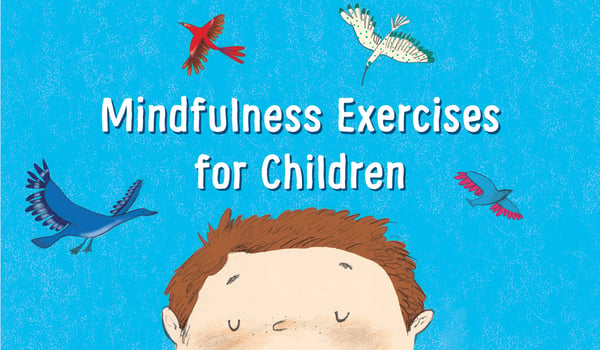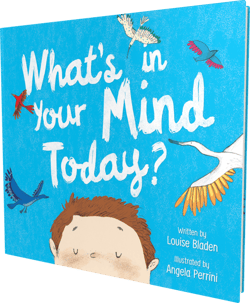Kids experience negative thoughts and anxiety too, especially in difficult times or when their routines are disrupted. Mindfulness is a great way for us to practice how to be calm and relaxed and learn that our thoughts and emotions don’t need to rule our minds. Below are kid-friendly mindfulness exercises to help children learn to breathe and center themselves, especially during times of increased anxiety.
Make a mind jar.
Find a glass jar—a Mason jar or an old sauce jar will work perfectly. Fill the jar with water, glitter, and glue (or glitter glue, if you want more sparkles). Ask your kid to shake the jar and imagine that the glitter is their thoughts. When you’re upset, your thoughts whirl around and make it hard to see clearly. Remind them that this is normal! Even adults experience this.
Then, have them watch what happens when they are still for a couple of moments. What happens to the glitter when it’s given a chance to rest? When you’re calm, your thoughts start to settle and you can see more clearly. Deep breaths can help a lot when we feel like our thoughts are swirling.
Establish a gratitude practice.
When we feel upset, one thing that can help us put things in perspective is to reflect on all the good things in our life. Take time with your child each day to write down a two or three things they are grateful for, in a notebook, on a household whiteboard, or even just on a scrap of paper. A gratitude practice helps us remember the good things in our life, especially when bad things are stressing us out. When your child is upset, you can also use that as an opportunity to pull out past gratitude lists as a reminder of the things and people they love.
Take a “brain break.”
When your child is feeling upset, ask them to take three to five minutes to sit still, focus on their breathing, and quiet their mind. Once they are feeling calmer, ask them how they feel now that they took a break. This will teach them that they can choose to pause and relax when they start to feel stressed or upset in any situation.
Use breathing exercises.
Breathing is a critical part of any mindfulness practice. Here are a few of our favorite, kid-friendly breathing exercises.
- Notice Your Breath: Ask your child to pay attention to what their breathing feels like. Have them take deep breaths and ask them to focus on the way their body and mind feel when they breathe deeply.
- Five-Finger Starfish Breathing: Ask your child to hold up one hand in a starfish position (fingers spread wide). As they focus on breathing regularly, ask them to trace up and down each finger with the other hand.
- Count Your Breath: Ask your child to pause and count their breaths. The first breath in and out is “1,” the next is “2,” and so on. Count up to ten.
Do a thought check.
It can be difficult for children to place a name the thoughts and emotions they are experiencing, especially when they seem negative. Give your child a piece of paper and ask them to color the way they are feeling and what they are thinking. Once they have drawn their thoughts, ask them a few questions. Why did they use that color? How does that thought make them feel? It is easier to understand our thoughts and figure out how to replace them with more positive thoughts once we are able to name them.
Body scan
This is a great mindfulness activity before bed. As your child is lying down on the floor or in bed, ask them to tense each muscle in succession. Start with their toes and feet, and then move all the way up to their face. Ask them to hold each muscle area for a few seconds, and then release all the tension and relax for a few minutes. This will let them slow their mind down and place their focus on one part of their body at a time.
Use a guided meditation.
Sometimes it’s easier to use an app or a book that walks us through a mindfulness practice. Headspace and Calm are two apps with guided meditations for children. If you’re looking for a guided meditation in the form of a book, What’s In Your Mind Today? serves as a guided meditation and helps kids to focus on their breathing and the thoughts in their head.
Whatever methods you use, teaching kids about mindfulness will help them navigate their thoughts, both positive and negative. Ultimately, we all have the ability to feel calm and at peace no matter what kinds of thoughts happen to be in our mind at any moment. Mindfulness practices help both adults and children feel calm in the midst of thoughts that come and go.



